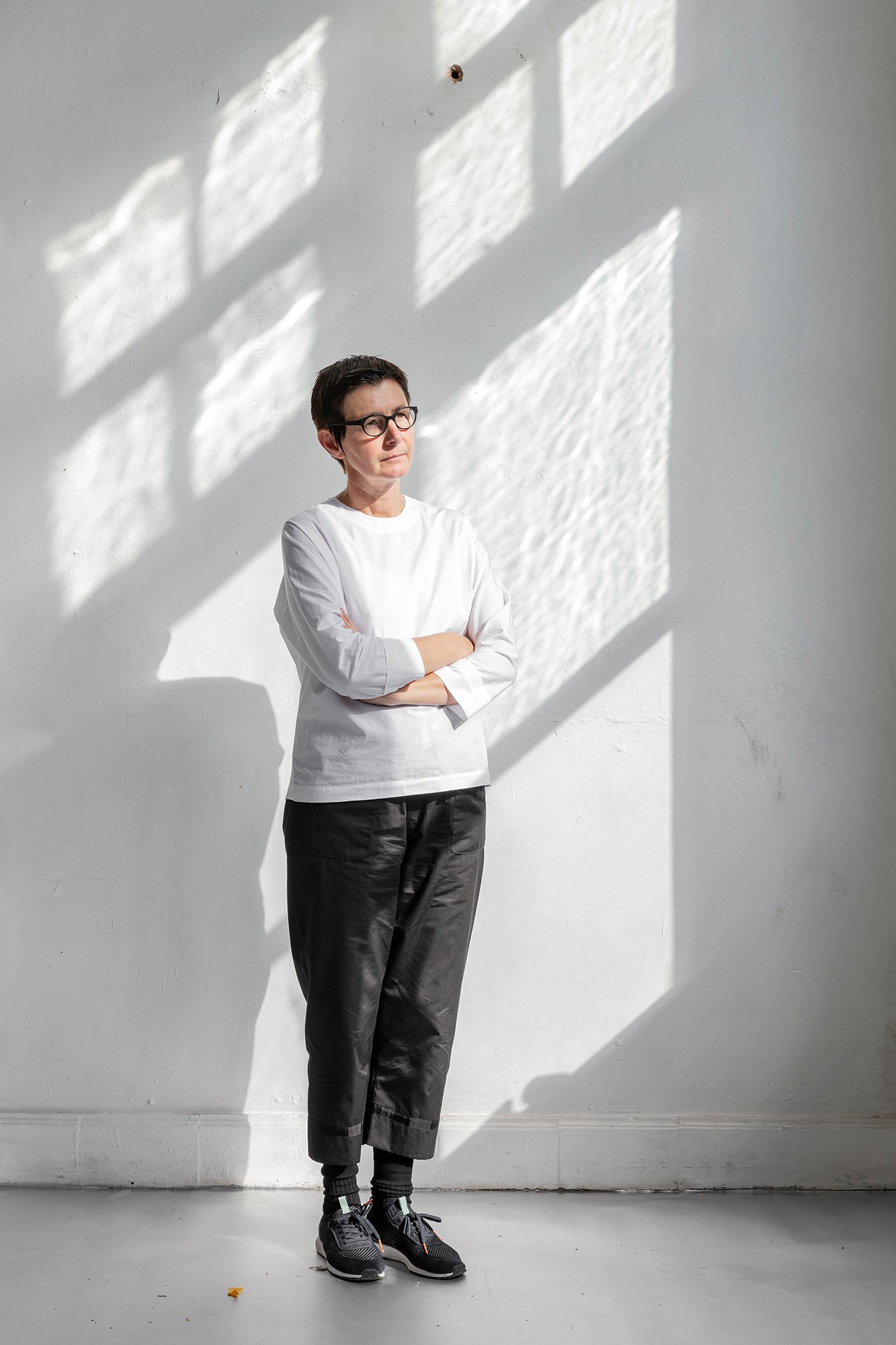Beauty in the ephemeral
Studio of Berlinde de Bruyckere
For more than twenty years, the work of Berlinde De Bruyckere has been enthralling, comforting and sometimes even shocking viewers. Now the Belgian sculptor has yet again taken her art in a new direction. ‘I’m less questioning of what I do. There’s less doubt. I just do it.’
Words: Hans-Maarten Post
Photography: Piet Albert Goethals
I begin with something that has become worthless, because it’s dead, but I try to give it some kind of new life.
The sun paints all kinds of geometrical forms on the white walls of the old school in Ghent that has been Berlinde De Bruyckere’s atelier for some thirty years now. In two of the classrooms a couple of finished sculptures are waiting to be shipped to new exhibitions. Three of them appear to be stacks of grey blankets on wooden pallets. ‘Look closer,’ the artist says. The blankets are in fact wax sculptures, the wood is bronze. ‘It almost seemed a lily’ is the title of another recent series of works,’ she explains. ‘It almost seemed: that part is important to me, and I think my work has that quality: you think you know what you’re looking at, but actually you’re looking at something else.’
When we ask the Belgian artist about two pieces in the hallway, she smilingly tells us that they have been sent off to the waiting room. Too many projects, not enough time. A few moments later De Bruyckere takes us to the garden. It’s a strange sight: underneath the apple trees lots of blankets are lying on the grass. Damp, dirty, muddy. ‘My silent workers,’ she says, mysteriously.
You were using blankets in the nineties. Are they making a comeback?
Back then I chose blankets for their intense connection to the world. Everybody used to have them on their beds. The colours of those blankets inspired me, and their ability to suggest warmth and protection. These days it’s hard to find blankets. We all have duvets. And that coincides with what I’m trying to express with those blankets now. By ill-treating them in my garden they lose the qualities I used to love them for. They resemble us, human beings, and our inability to provide love and care where needed. The world has become too big, too complex. All our problems have become much bigger than twenty years ago.
I feel that it’s impossible to express what is going on around us, by using the same materials, or the same themes as I did before. Take the human body for instance, which I have been working with for so many years. For me it has become too small to capture and convey the complexity of the world we’re living in. It’s a big step for me, handing those blankets over to nature, exposing them to the elements. Twice a week I go and look. Some of them may stay there for two years. When I feel that I need them, I bring them back into my atelier. And that is new. In the past, everything here was controlled. Be it a cast, or a painting. Now I leave some of it to nature.
People say that your work comforts them, or they are taken away by the sheer beauty of it. But what is it that you are searching for, as an artist?
I often say that I’m looking for beauty in decay, in the ephemeral. Take, for instance, the way I worked with dead horses or trees in the past, or what I’m doing now with blankets and animal skins. I begin with something that has lost its value, because it’s dead, but I try to give it some kind of new life. Beauty in the ephemeral. Maybe that sounds rather tragic, but to me it doesn’t. Because in the end everything perishes.
I can be deeply moved by the brittleness of those rotten blankets, for instance. I’m very sensitive to the tactility of things. But of course, there is a duality at play. I take blankets that are still good, and I let them rot. I strip them of the qualities that used to be so dear to me. It’s as if I’m abusing them. But not in a way that bothers me. In the end it’s about the sculpture. About surpassing that action. You do something that is supposedly not done, but thereby you create something that transcends that action, and that pays off, eventually.





